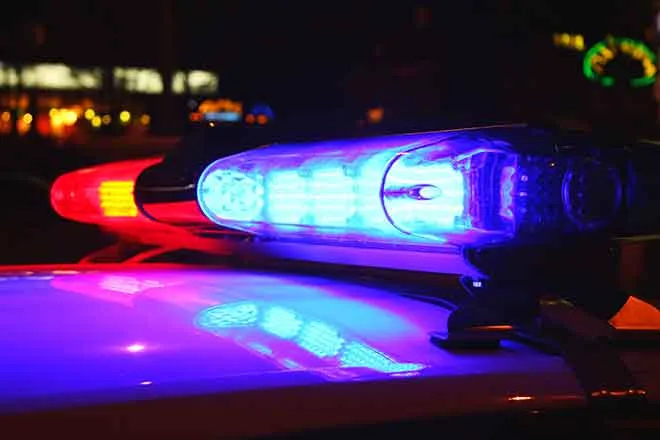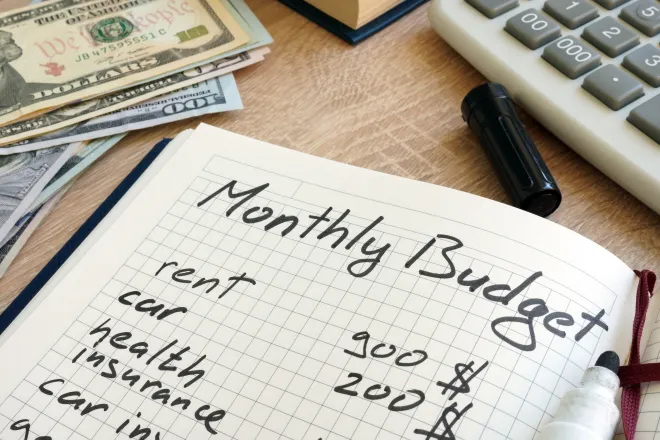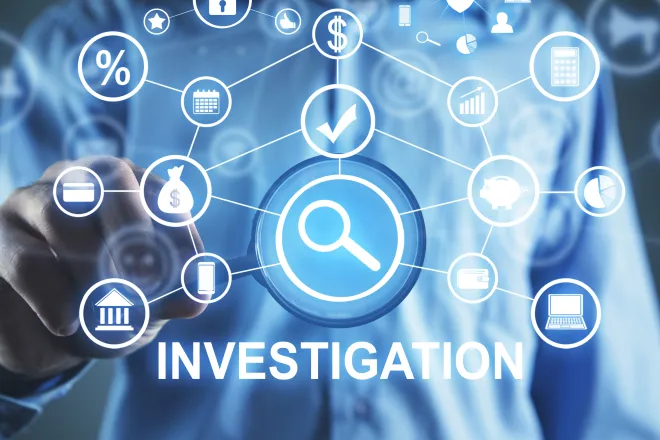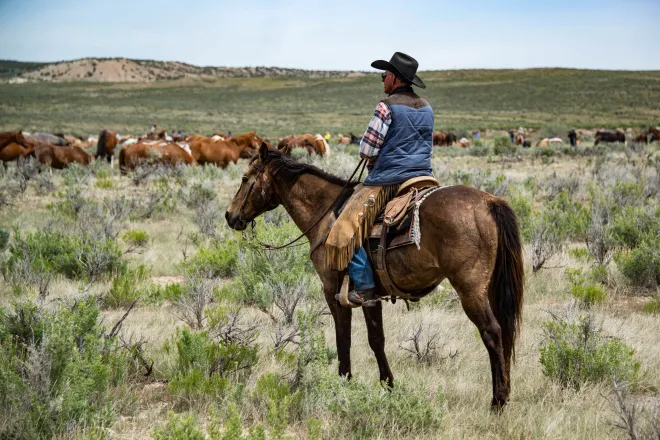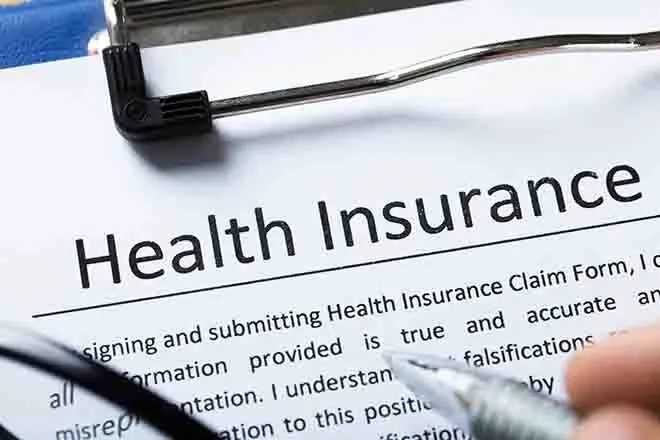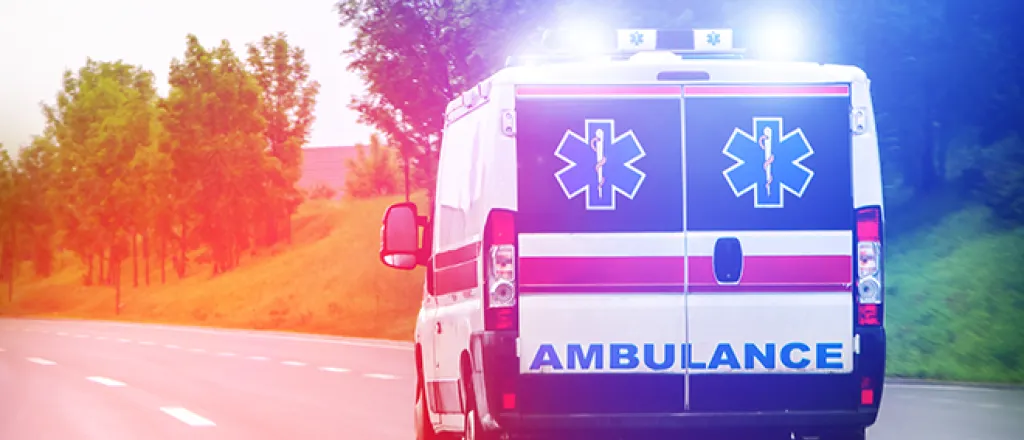
South Dakota lawmakers look for ways to deliver on support for ‘essential’ ambulance service
Back in February, South Dakota lawmakers recognized emergency medical services as an “essential service.”
Sort of.
“Essential service” typically means the government has to guarantee access to said service by providing or funding it.
Most states don’t affix that designation to ambulance services.
South Dakota lawmakers voted unanimously in favor of a non-binding resolution that says the Legislature “supports efforts to prioritize emergency medical service as an essential public service.”

© 4nadia - iStock-1444857682
There were other efforts in Pierre that didn’t get quite so warm a reception.
Two days after the passage of that resolution, lawmakers shot down a bill that would’ve required counties and municipalities to provide ambulance services. Eight days after that, they shot down a similar bill that would’ve created a state fund to divert some money from criminal fines to help pay for services.
Instead of backing those bills, they chartered a committee to study the issue and stocked it with five senators and six representatives.
On Monday, that group of lawmakers convened in Pierre to talk about long-term survival for the ambulance services now provided by a mix of paid and volunteer response teams across the state.
The Emergency Medical Services Interim Committee heard testimony on low passage rates for emergency medical technician exams, a decline in volunteerism and the difficulty of setting up an ambulance district, a legal entity.
But one issue loomed over all others.
“The biggest thing I want to get across is that somebody has got to be responsible for funding us,” said Maynard Konechne, director of the South Dakota Emergency Medical Services Association and a presenter during the Monday meeting.
The study group, which reconvenes on July 23, is tasked with producing a report for lawmakers on the sustainability of ambulance services in South Dakota, with a focus on three areas:
- Staff recruitment, training and retention.
- Access to care in rural areas far from trauma care centers.
- Efficiencies in operations.
Citizens expect an ambulance to show up regardless of how far they live from the nearest hospital, said Senator Tim Reed, R-Brookings, one of the committee’s two leaders. That means the group — and the Legislature as a whole — has to be ready to change the way it thinks about emergency medical services (EMS).
“We have to be willing to have a conversation about how we recognize, support and potentially restructure EMS as an essential part of our public safety system, just like law enforcement or fire services,” said Senator Tim Reed, R-Brookings, co-chair of the committee.
Rural areas, declining volunteers, low reimbursement rates
The average emergency medical technician in South Dakota is 51 years old, according to survey data collected by the state Department of Health.
The department regulates and offers technical support to the state’s 121 licensed ambulance services. It also offers training, collects data, and, for the past three years, has been in the process of disbursing $20 million in COVID-era funding to modernize and bolster ambulance services across the state.
Marty Link, the director of the department’s Emergency Medical Services and Trauma Program, told the committee that South Dakota has 28 active emergency medical technicians (EMTs) between 70 and 75 years old — and two in their 80s.

“They’re doing great work, and I love them dearly,” said Link, himself a longtime service provider, but aging providers are part of the reason the state urged ambulance services to apply for grants to buy “power cots.” The cots lift and push patients into place without the aid of paramedic muscle, which allows older providers to stay on duty a few more years.
The trouble is that fewer people are signing on to be volunteer technicians, Link said, and more stringent testing requirements have become a hurdle in recent years.
Just 56 percent of the South Dakotans who took their paramedic test with the National Registry of Emergency Medical Technicians passed on the first try this year. EMTs aren’t as highly trained as paramedics, but also must pass a test, often after completing a 190-hour certification course. The passage rate for South Dakota EMT hopefuls in 2025 thus far is 72 percent.
Paramedic and state Representative Eric Emery, D-Rosebud, told the committee his first emergency medical course lasted eight hours. Increasing professionalization has meant a more skilled response team, he said, but it’s also put some people off.
Twenty-eight ambulance services in South Dakota are all volunteer. Another 24 have a mix of paid staff and volunteers, and still more are paid per-call.
Training can be ‘“four, five, six months of their life for something that they may not even be compensated for,” Emery said.
Jerome Harvey of Pennington County, a volunteer firefighter, told the committee he doesn’t see the volunteer model as workable long-term.
“The number one issue is steady state funding and realizing the fact that it is a profession,” he said. “We have to recognize that we’re on the other side of the mountain, on the other side of the pyramid, on the downhill slide in terms of volunteerism.”
Recruitment and retention were the number one needs identified in health department surveys of ambulance agencies, part of a 2023 sustainability assessment.
On Monday, Link and Health Secretary Melissa Magstadt trumpeted the department’s “Telemedicine in Motion” program, which has equipped 84 percent of South Dakota ambulance agencies with tablets that connect to doctors who can advise EMTs on how to best deal with traumatic issues.
Reimbursement troubles
Lemmon, in far northwestern South Dakota, is among the more rural of the state’s rural enclaves. Its nearest hospital is 26 miles away in Hettinger, North Dakota.
Some of Lemmon’s ambulance services are delivered on a pay-per-call basis, but the call cost often outpaces the pay. Medicare covers about $650, Lemmon EMT Association Treasurer Carrie Derschan said, and Medicaid reimbursements pay around $400.
“That’s about 56 percent,” of the cost to run a patient from the Lemmon nursing home to the nearer hospital.
“We have to write the rest of that off,” she said.
A “Big, Beautiful Bill” packed with President Trump’s policy prescriptions is currently up for debate in Congress. The bill’s provisions have been revised multiple times so far, but Konechne, the EMS Association leader, said he worries that its proposed cuts to Medicaid will exacerbate the issues facing the mobile medical teams.
“We’re struggling the way it is,” said Konechne. “And now we’re going to take another hit. They’re not doing that for police and firefighters.”
Next steps
An increase to the base rate paid by Medicare and Medicaid in South Dakota for ambulance rides is among the funding options listed by the health department in its Monday presentation. Also suggested was funding help for training courses from the state, more investment from local communities for operational needs, and additional fees for “super speeders” or drunken drivers, earmarked to fund medical services.
Community buy-in is already part of the funding puzzle for rural ambulance services.

Spearfish pitches in $50,000 a year, that city’s EMS director said. In Buffalo, a northwestern city near the Montana border, financial support for the Harding County service’s 2,500-square-mile coverage area comes from local businesses.
“They realize that we are health care,” said Annette Slaba, Harding County’s EMS director.
Emery sponsored one of the bills to require counties and cities to fund ambulance services that failed to earn support back in February.
His included a plan to siphon some of the money the state collects in criminal fines into an EMS fund, from which localities could pull grants for their operations. It would have started with $1 million from the state general fund, but Emery said during debate on the measure that the fund would probably need $50 million a year to meet the state’s needs.
Committee member Senator Tamara Grove, R-Lower Brule, said Monday that she feels like citizens wouldn’t balk at paying additional taxes for emergency medical services, as long as they understood where their money was going.
“We want quality people in those ambulances,” Grove said. “We want people who know what they’re doing and are willing to show up at our worst moments.”
Senator Reed suggested that lawmakers could simplify the process of starting an ambulance district, around 20 of which exist today as multi-county, or multi-community partnerships. If state law makes it too difficult to set up those districts, Reed said, it might make sense to simplify the process to let communities take the lead.
“I don’t think we want the state starting to draw lines,” Reed said. “It’s best for communities to work together and figure this out. A taxing district would be a way of doing that.”






